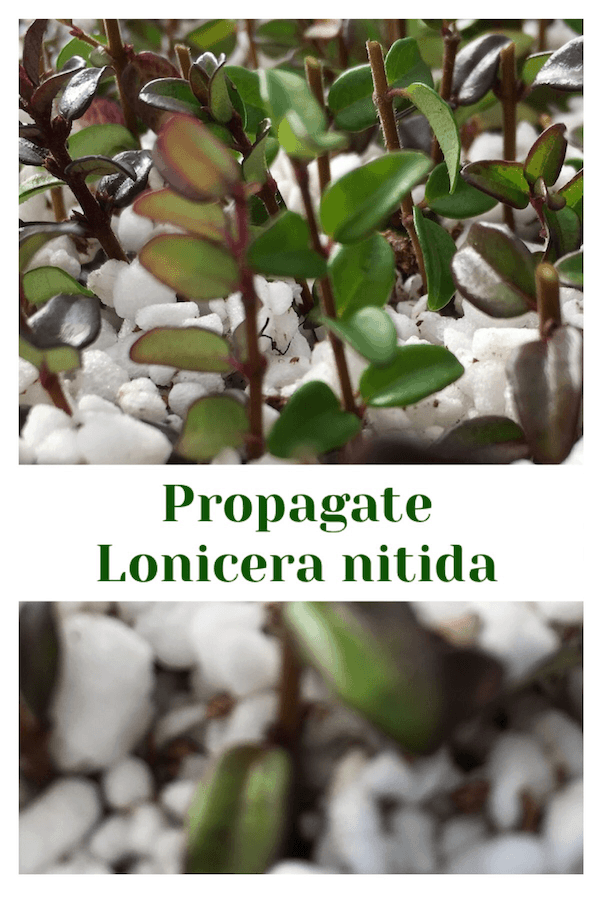
Lonicera nitida commonly known as dwarf honeysuckle or box leaf honeysuckle, is a great fast growing hedging plant.
It’s also very popular for topiary and bonsai as it responds superbly to regular trimming.
Because you often need to buy so many plants to make a hedge, you may be interested in propagating your own plants. Lonicera is a really easy plant to propagate and this article will hopefully help you successfully produce your own plants.
To propagate lonicera we use cuttings.
Taking the cuttings
We always take our lonicera cuttings in winter, this is just when we have the most time in the nursery to catch up on propagating, getting ready for spring. With that said, lonicera can be propagated throughout the year as it’s evergreen and fast growing.
The best cuttings are semi-hardwood cuttings. These are parts of the stem a little way down from the fresh soft tips (see photo below).
I almost always prefer to take small cuttings about 5-7cm (2-3″) in length. The less foliage and stem the cutting has to sustain without roots, the better, in my opinion.
All you need to do is cut a piece of the semi-hardwood stem into a 5-7cm (2-3″) length and strip away the bottom half of the foliage (see photo below).
Always take more cuttings than you need, as not all of them will work. Our success rate is usually around 90%.
The next step is placing them in a suitable environment to strike roots.
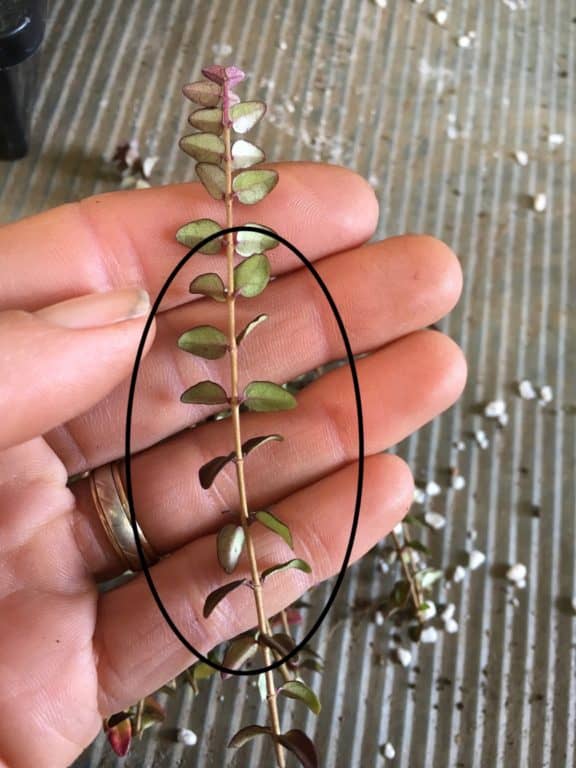
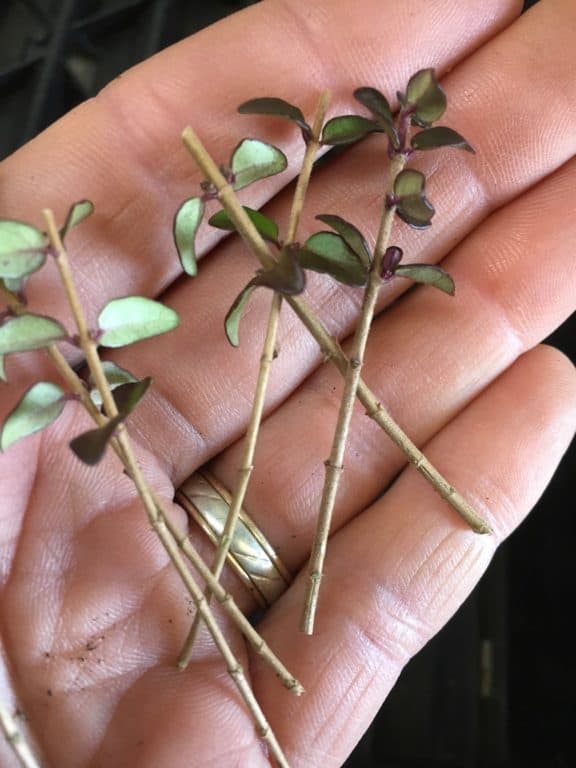
Striking Roots
We use a mix of perlite and peat moss to strike the roots. Our mix is 90% perlite and 10% peat moss. Both are great at holding moisture which is very important when trying to strike cuttings.
Our cuttings are planted in a seedling tray but you can use whatever container you have available provided it has drain holes. While cuttings do need moisture, if they are kept to wet they will rot, or fungus will grow.
Always wet the perlite peat moss mix before sticking the cutting in, this firms the mix up. The mix is very light and the cuttings may fall over if the mix is not firm enough.
Because the cuttings are semi hardwood they easily push into the mix without the need to make a small pilot hole. Simply just plonk them in.
After all the cuttings are in your mix, water really well.
For best results, your cutting should be kept in a sheltered area, away from wind and direct sunlight. We have a poly tunnel green house where we store out cuttings. Other alternatives are a sheltered patio/porch, cold frame, or indoors near a window.
Roots on our cuttings develop quite quickly. The cuttings in this article had quite extensive roots after 3 months (see photo). They could have been potted much sooner than we did, we just had lack of time.

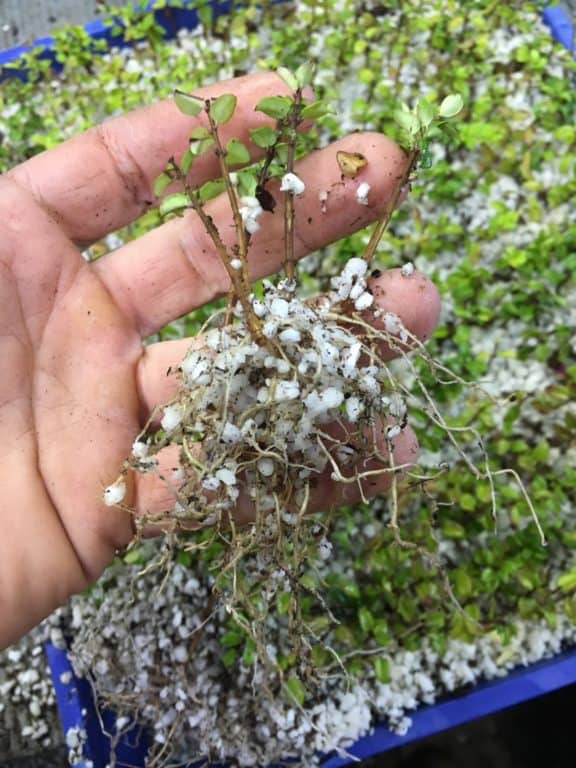
Potting the cuttings
Once the roots have developed we then pot the cuttings into potting mix. Always use a good quality potting or seedling mix. Plenty of organic material and trace elements.
We pot ours into 50mm (2″) tube pots, again you could use any container available provided there are adequate drainage holes. Don’t go too big, just in case you have some fatalities, it would be a waste of potting mix.
When you’ve potted up all the cuttings, water them thoroughly. We like to use seasol liquid seaweed on this first watering. I find it helps promote strong robust root growth, which leads to faster growing, stronger plants.
For the first month or so it’s a good idea to keep the freshly potted plants out of the harsh elements. Again, we store them in the greenhouse for the first month. In that month the plants will most likely double in size. Once they have done that move them out into the elements.
Once the roots are filling the pot or container, the plants are ready to be planted into the garden or larger pots.
We hope this article has been helpful. If so, it would be awesome if you subscribe to our mailing list so we can share other helpful content with you.
Happy planting 😉


You may also be interested in checking out the other plants we propagate
We have also put together a resource page that contains links to the products we use or similar. If you want to check that out click the link.
Propagating Lonicera Nitida Video
A short video showing the above steps.
Lonicera Nitida Information
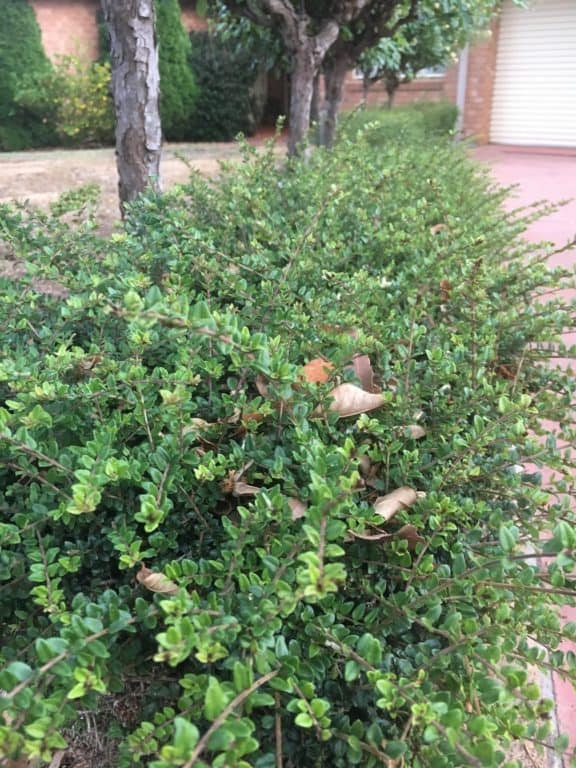
Lonicera nitida is an evergreen shrub. It has very small glossy-green leaves. It has fragrant white-creamy flowers which are produced in late spring.
Box honeysuckle is a great choice for hedges, it’s very fast growing and doesn’t have that horrible winter odour that english box does. It’s also fabulous for topiary or bonsai.
Performs best in fertile, well drained soil. Best in full sun, however will tolerate some shade. It’s a very hardy shrub which can tolerate dry periods and temperatures down to -15C, it is also (supposedly) deer and rabbit resistant. Loves a good regular prune.
Cultural notes
Botanical name: Lonicera nitida
Common name: Box honeysuckle
Family: Caprifoliaceae
Native to: China
Flowers: Late spring
Position: Full sun/Part shade
Height: 3m
Width: 3m
